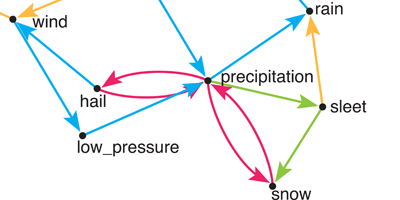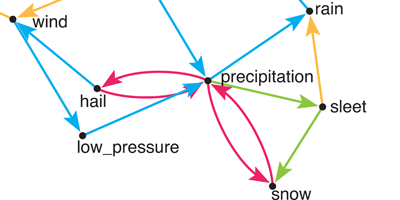The Value of Circular Definitions
More than one reader has looked up a word in a dictionary, turned to a word used in the definition, only to be eventually pointed back to the original word in a loop of circular definitions. As annoying as this might sometimes be, such loops offer insights into the structure of a language and the expansion of its lexicon. David Levary, of Harvard University, and colleagues report in Physical Review X their use of methods from graph theory and statistical physics to study networks of words in dictionaries and show that creation of these loops is a fundamental mechanism in the growth of a language.
The authors looked at the words in a database called WordNet, treating them as nodes in a graph structure connected by directional links (that is, the link points to words used in the definition). Levary et al. show both theoretically and from watching how nodes are incorporated into the graph that new concepts can only be introduced by adding a loop to the network. They also discovered that words in a given loop often were introduced into the language at about the same time. When the dates of origin of words in a loop differ greatly, it typically indicates a fundamental change in a word’s meaning after its earlier introduction.
Levary et al. further found that new words preferentially attach to existing words with a large number of links pointing to them, a kind of linguistic “rich get richer” behavior. This matches our intuition that new words are defined in terms of well-used common words for better understandability. Taken together, the results suggest that such techniques from physics and graph theory could be a valuable forensic tool for uncovering the deeper workings of human communication and the evolution of language. – David Voss





